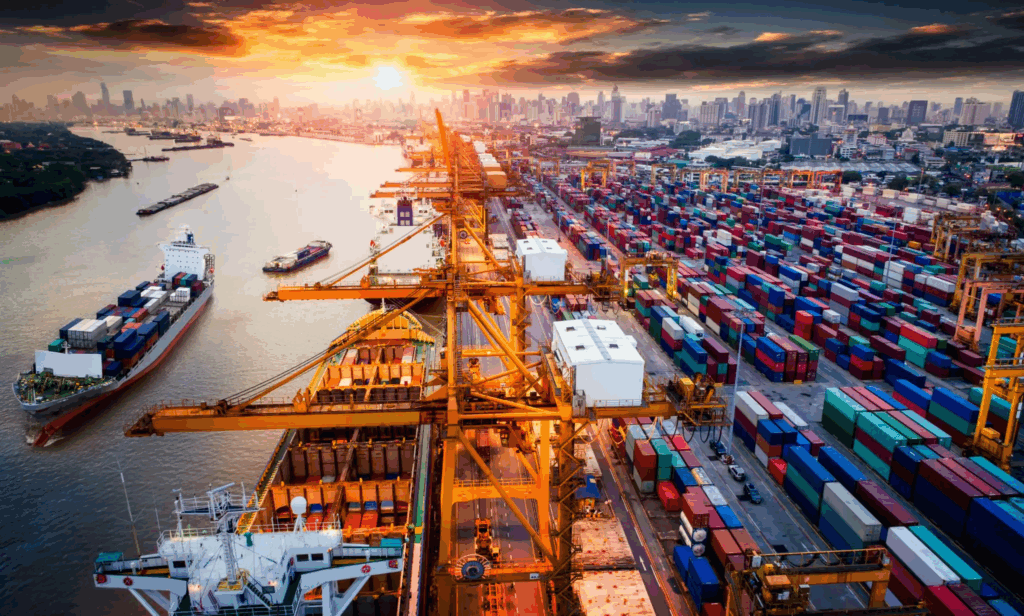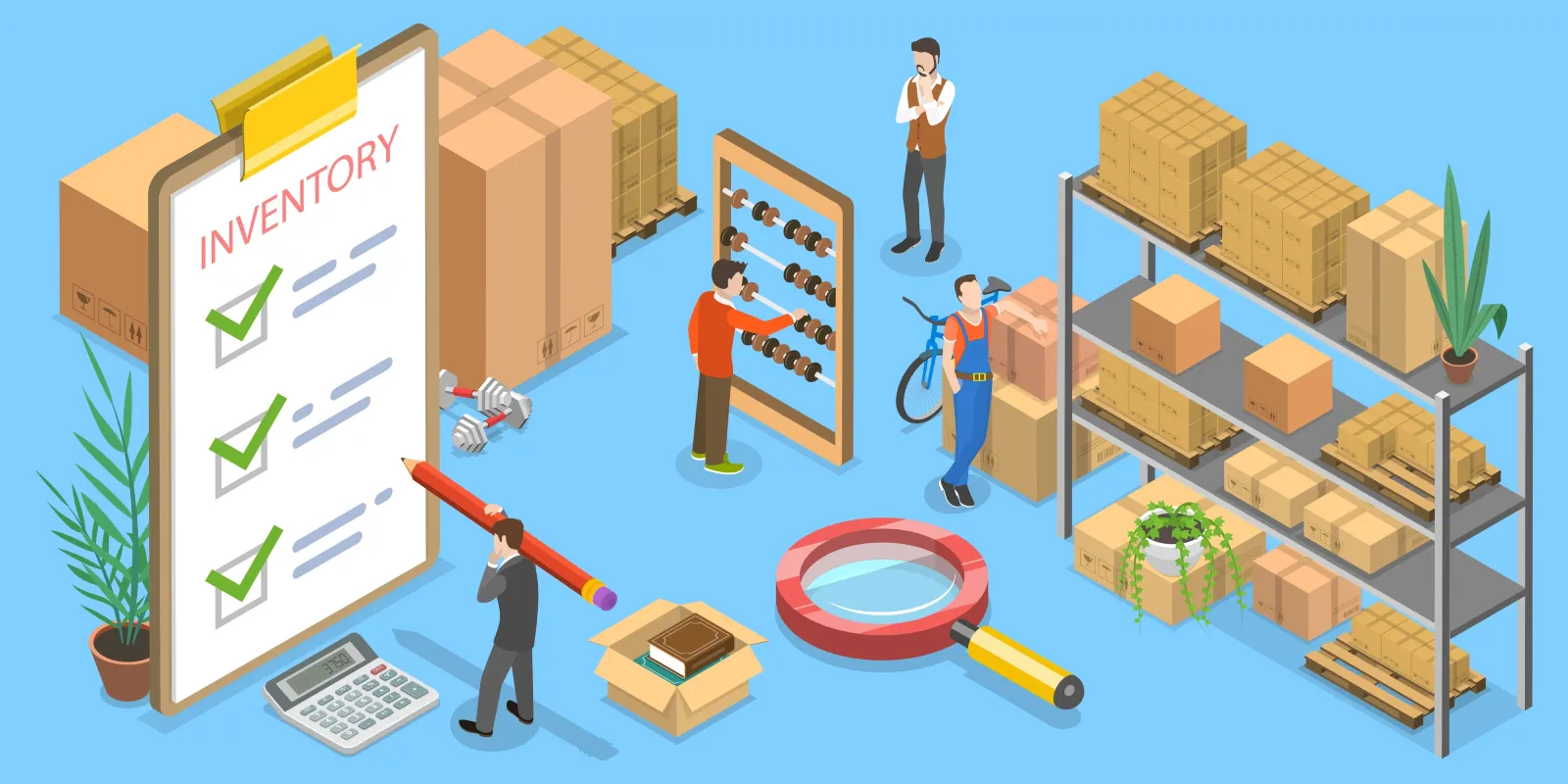Blockchain in Global Logistics Visibility: Building Trust and Transparency
Blockchain in global logistics visibility is redefining how companies track shipments, verify transactions, and build trust across complex international supply chains. As logistics networks expand and data silos grow, transparency becomes essential for maintaining reliability and efficiency. Blockchain provides a secure, decentralized way to record every movement of goods — from production to delivery — enabling full visibility and accountability.
1. The Role of Blockchain in Global Logistics

Global logistics involves thousands of data points: inventory records, shipping manifests, customs clearances, and delivery confirmations. Traditional systems often struggle with fragmented data, delayed updates, and human error. Blockchain technology solves these challenges by creating a shared digital ledger that records every transaction in real time and is accessible to all participants.
1.1 What Blockchain Brings to Logistics Visibility
Every entry on a blockchain ledger is time-stamped, verified, and immutable. This means once information is recorded — such as a shipment leaving a warehouse — it cannot be altered. The result is a transparent chain of custody that helps businesses detect discrepancies instantly and prevent fraud or tampering.
1.2 Why Global Logistics Needs Blockchain
International trade involves many intermediaries: manufacturers, freight forwarders, ports, customs, and retailers. Each uses its own tracking system, making coordination difficult. Blockchain eliminates these barriers by acting as a single source of truth, connecting all stakeholders through a trusted and verifiable network.
2. Improving Supply Chain Transparency
Transparency is the foundation of trust. Blockchain transforms how companies monitor goods and share logistics data.
2.1 Real-Time Tracking and Proof of Origin
With blockchain-based tracking, each step in the supply chain is recorded — including timestamps, geolocation, and ownership data. This allows end customers to verify the authenticity and origin of their products. For example, a coffee retailer can trace beans back to a specific farm, ensuring ethical sourcing and compliance.
2.2 Reducing Counterfeits and Fraud
Counterfeit goods remain a major challenge in global logistics. Blockchain helps solve this by linking a unique digital identity to every shipment. Once added to the blockchain, the product’s identity and journey are publicly verifiable. This makes it nearly impossible for fake items to enter the supply chain unnoticed.
2.3 Shared Access for All Stakeholders
Unlike traditional databases, blockchain gives every authorized party access to the same real-time data. Manufacturers, shippers, and buyers can view updates simultaneously without waiting for manual reporting. This transparency minimizes misunderstandings, improves collaboration, and speeds up decision-making.
3. Building Trust and Efficiency with Blockchain in Global Logistics

Trust between logistics partners is often based on documentation and manual checks. Blockchain replaces this with verifiable digital transactions that cannot be altered or deleted.
3.1 Immutable Data Records
Each transaction is recorded as a block, linked to the previous one. This structure makes data tampering virtually impossible. A customs official or logistics manager can confidently verify shipment details without relying on intermediaries.
3.2 Smart Contracts for Automation
Smart contracts — self-executing agreements coded on the blockchain — automatically trigger actions when conditions are met. For instance, payment can be released once goods reach a certain location and are verified. This automation reduces paperwork, speeds up settlements, and ensures all parties meet agreed terms.
3.3 Strengthening Accountability
When every step is recorded and accessible, accountability naturally increases. Disputes over delays, lost goods, or incorrect documentation become easier to resolve because every record is verifiable. This transparency builds lasting trust among partners across borders.
4. Reducing Costs and Delays
Cost efficiency is another major advantage of blockchain in logistics. By removing redundant processes and manual verifications, businesses save both time and money.
4.1 Eliminating Paperwork
Traditional logistics processes rely heavily on paper documentation — bills of lading, certificates, and customs forms. Blockchain digitizes these records and stores them securely online. This reduces errors, prevents data loss, and accelerates customs clearance.
4.2 Cutting Out Middlemen
Many global supply chains involve third-party intermediaries to verify data or facilitate payments. Blockchain’s transparent and self-verifying structure makes these roles unnecessary, leading to faster settlements and lower fees.
4.3 Preventing Delivery Delays
With real-time visibility, companies can identify bottlenecks before they escalate. If a shipment gets stuck at customs or delayed at a port, the blockchain record immediately updates all parties. This allows for quicker action and better coordination between carriers and warehouses.
5. Enhancing Security and Compliance

Logistics systems handle sensitive data, from shipment values to customer information. Blockchain adds a powerful security layer through encryption and decentralization.
5.1 Encrypted and Tamper-Proof Data
Data stored on a blockchain is encrypted and distributed across multiple nodes. No single party controls it, making hacking extremely difficult. This decentralized protection ensures that logistics data remains private and authentic.
5.2 Simplifying Regulatory Compliance
Global trade regulations require detailed documentation for goods movement, taxes, and safety standards. Blockchain automates compliance by storing all required information in one verifiable source. Regulators can access accurate data directly without needing manual submissions, reducing audit time.
5.3 Tracking Sustainability Goals
Many companies now use blockchain to prove their commitment to sustainability. By tracing materials and carbon emissions across the supply chain, businesses can generate verifiable environmental reports that meet international standards.
6. Integration with Emerging Technologies
Blockchain doesn’t work alone — it integrates with other technologies to build stronger logistics networks.
6.1 IoT Devices and Sensors
When combined with Internet of Things (IoT) sensors, blockchain records real-time data such as temperature, humidity, or location. This is vital for industries like pharmaceuticals or food delivery, where condition tracking ensures quality and compliance.
6.2 Artificial Intelligence for Predictive Insights
AI tools can analyze blockchain data to forecast demand, predict shipping delays, or optimize routes. The combination of AI and blockchain enables logistics networks to be both transparent and predictive.
6.3 Cloud-Based Fulfillment Platforms

Global fulfillment systems built on blockchain and cloud infrastructure allow multiple warehouses to share data seamlessly. PostalParcel, for instance, leverages similar technologies to help businesses achieve end-to-end visibility, automate shipments, and enhance trust between partners.
7. Real-World Use Cases
Several global logistics leaders have already implemented blockchain solutions:
- Maersk and IBM’s TradeLens: Used blockchain to track shipments and improve port efficiency.
- DHL and Accenture: Applied blockchain to manage pharmaceutical supply chains securely.
- UPS: Integrated blockchain for cross-border tracking and customs documentation.
These examples show how transparency and automation can reshape global trade.
8. Challenges and Future Outlook
Despite its advantages, blockchain adoption still faces a few challenges. Integrating with legacy systems, managing data privacy laws, and standardizing formats across countries remain major concerns. However, as global logistics networks grow more connected, these challenges are being solved through collaboration between governments, tech providers, and logistics companies.
The future of blockchain in global logistics visibility looks promising. As businesses focus more on sustainability and data security, blockchain’s role as a trust engine will continue to expand. Transparent, verifiable, and efficient — it is paving the way for a more accountable global logistics ecosystem.
Conclusion
Blockchain in global logistics visibility is not just about tracking—it’s about creating trust where data once failed. By connecting partners through shared, verifiable records, businesses can eliminate inefficiencies and secure their supply chains from end to end. As blockchain continues to evolve, companies embracing it early will enjoy faster operations, greater transparency, and stronger customer loyalty worldwide.
Industry Insights
news via inbox
Nulla turp dis cursus. Integer liberos euismod pretium faucibua







